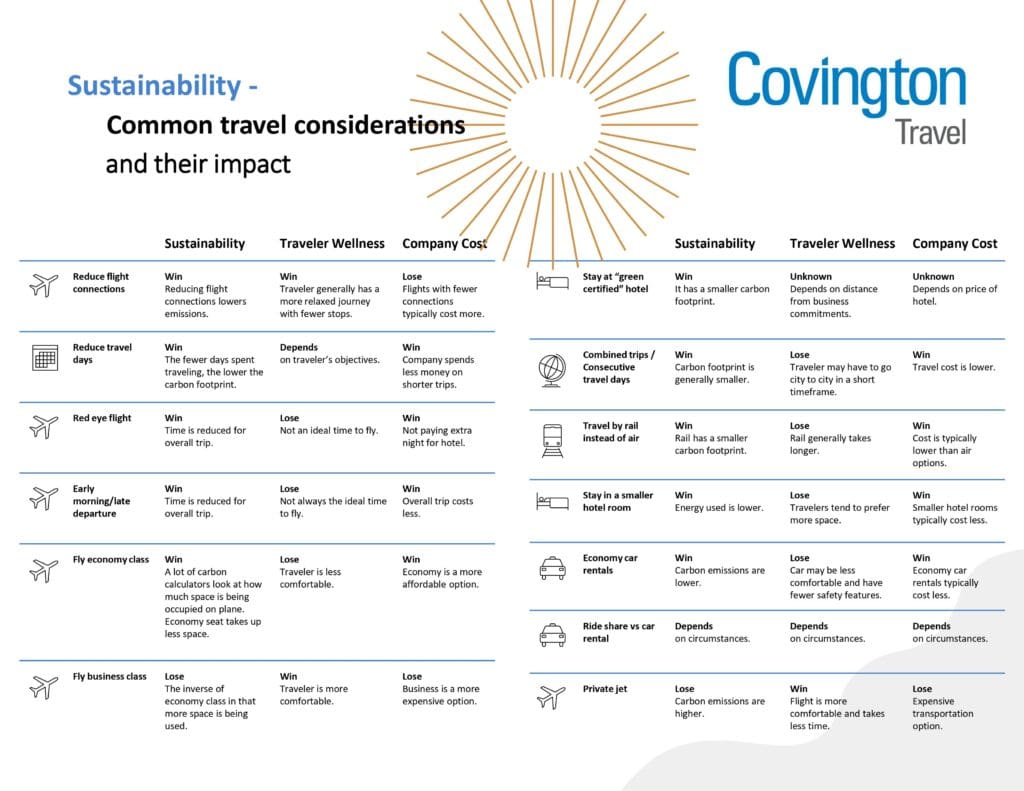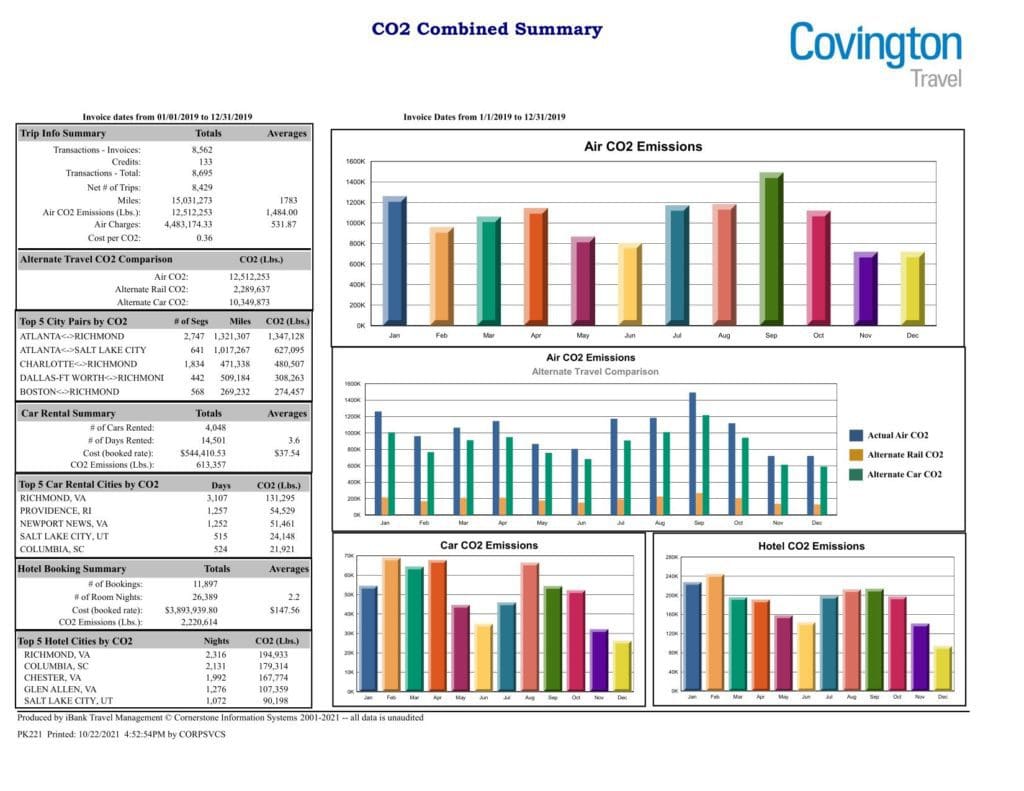It is abundantly clear that our Earth is deep into a climate crisis largely fueled by greenhouse gases. As business and tourism became global endeavors, transportation of people and goods rose to account for 28 percent of worldwide greenhouse gas emissions (GHG) that drive global warming. The world can no longer ignore the consequences and the aviation industry has joined governments, scientists, and earth stewards in a race to implement sustainability initiatives that curtail their impact on our fragile environment.
The Intergovernmental Panel on Climate Change (IPCC) is the United Nations body for assessing the science related to climate change. It determined that GHG emissions must be reduced by a factor of four by 2050 to mitigate the worst effects of climate change. That’s a daunting goal, but the aviation industry is taking it on.
Aviation Sustainability Initiatives and Pledges
Commercial aviation is responsible for 2.5 percent of global carbon dioxide emissions (CO2).
In 2009, the International Air Transport Association (IATA) adopted a set of three targets to lessen CO2 emissions from air transport. The goals are:
- Improve fuel efficiency by 1.5% per year from 2009 to 2020
- Achieve carbon-neutral growth (net CO2 emissions) from 2020
- Reduce net aviation CO2 emissions by 50% by 2050, relative to 2005 levels
Airlines continue making progress on these goals by developing new materials, lightening aircraft, and making planes more aerodynamic. They improve flight routing to conserve fuel and cut emissions by purchasing carbon offsets to compensate for environmental impact. Some domestic aviation sustainability initiatives include:
- Delta Air Lines committed $1 billion in March 2020 to become carbon neutral by 2030 by focusing on fleet management, sustainable aviation fuel (SAF) and carbon capture. Delta is the only airline to cap emissions at 2012 levels by using carbon offests. It plans to have 25% of ground support equipment electrified by 2022 and continues to invest in community-enhancing projects to achieve carbon neutrality.
- American Airlines introduced a program for customers to buy carbon offsets to offset their individual flights. Since 2013, it has retired 667 aircraft and replaced them with 595 new planes, and currently holds the aviation industry’s largest purchasing commitment for SAF.
- United Airlines created an alliance with major corporations to invest in SAF and pledges to be carbon neutral by 2050. It has made multimillion-dollar investments in direct air capture technology and continues replacing ground equipment with electric alternatives with 45% converted to date.
- Alaska Airlines committed to fleet renewal and using SAF to improve fuel efficiency and using carbon offsetting as a path to net-zero by 2040. It offers a consumer offset program and in 2021 included a CO2 emissions target in the incentive pay program for all 22,000 employees.
- Southwest intends for SAF to comprise 10% of its total fuel consumption by 2030 and has pledged to achieve net-zero carbon emissions by 2050.
- Jet Blue is equipping aircrafts with NextGen systems to save more than 500,000 gallons of fuel burn per year, using SAF produced 100% from waste and residue raw materials to meet its 2040 net zero target. It was the first and only U.S. airline to voluntarily offset all CO2 emission for all domestic flights.
How can individual travelers participate?
It is possible to fly without increasing your personal overall carbon footprint. There are many carbon offsetting programs that allow travelers to purchase “carbon credits” that fund various environmental programs like tree planting, habitat protection, waste composting, and renewable energy. Simply packing lighter also makes a difference – just one pound less weight multiplied by each passenger on a given flight reduces fuel consumption.
The graphic below depicts more sustainability initiatives for individuals to consider, as well as their impact on the traveler, environment, and employer.
Sustainability Initiatives for Business Travel Programs
Where is the travel program now?
For companies that want to reduce the carbon footprint of their business travel program, we have several recommendations. First, it’s important to understand where the company is on a sustainability initiative “maturity level.” The Global Business Travel Association (GBTA) has developed a Sustainability Self-Assessment Tool to help businesses determine where their travel programs are on a scale of 1 – 5. Contact Covington for a copy of the assessment tool.
Once management determines where the existing travel program is they can decide target goals and a time frame. Covington Travel can provide summary CO2 reporting on all travel processed by Covington, including Concur online bookings.
Sustainability Collaboration
The next step is developing sustainable initiatives and collaboration that reduce the environmental impact of your travel program. Covington recommends engaging with Advito, the consulting division of BCD Travel, the third-largest travel management company in the world. Advito’s consulting focus is on travel program efficiency, sustainability, cost-effectiveness, and improving the business traveler experience.
It advocates for sustainable travel solutions that drive savings and increase traveler satisfaction. Through a mix of advanced business intelligence, supplier management, and Traveler Engagement strategies, clients can ensure reduced carbon emissions, business continuity, productivity, and satisfaction.
Contact a Covington Account Manager for a personal introduction to Advito or to discuss sustainability initiatives in your travel program.









Leave a Reply